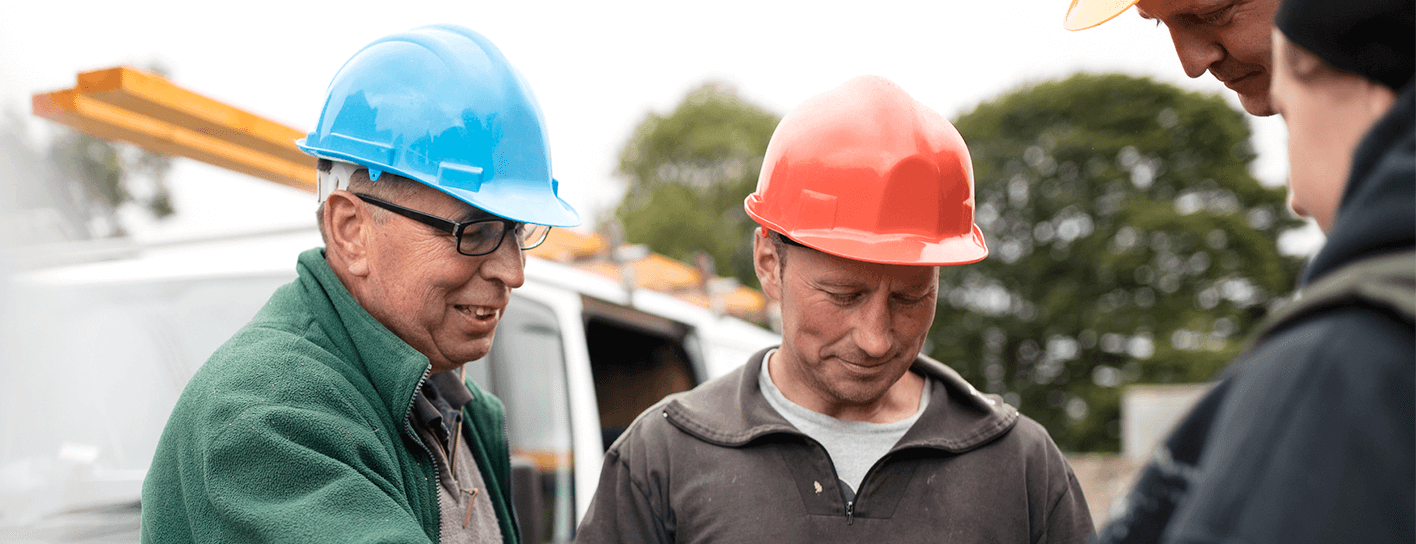
Construction Design and Management (CDM) Regulations
To prevent illness, injuries and, worst case, deaths, it’s critical that you keep up with what’s required of you as a business – and that means following procedures and having designated individuals responsible for ensuring all goes to plan.
The Construction, Design and Management (CDM) Regulations exist to safeguard every single person on a construction project and secure their health and safety. CDM Regulations also make sure the right people are appointed for the planning and safe implementation of procedures throughout a project.
Almost everyone on a construction project will have a legal duty so it’s important to know who has what duty, what they’re responsible for and if they’re complying with the law.
What are the CDM Regulations?
The Construction, Design and Management Regulations 2015 have six core objectives to help people involved with construction projects to:
- Work safely by carefully planning projects so that are all risks are identified at the very start and managed until the very end.
- Ensure that people are appointed correct jobs and are carrying them out safely.
- Effectively co-operate and co-ordinate tasks with relevant people ensuring that they have the correct skills and knowledge needed.
- Make sure that the right information about the risks and how they’re being managed is made available.
- Clearly communicate relevant information with everyone who needs to know it.
- Effectively consult and engage with workers about any risks they may be subject to, and how those risks are being managed.
When do the CDM Regulations apply?
The CDM Regulations apply to any construction project (for example, a construction phase plan is required for every project) and must be notified to the Health and Safety Executive if it:
- Lasts more than 30 working days and involves more than 20 workers at any one time; OR
- Requires more than 500 individual worker days.
In terms of the type of project, the CDM Regulations cover anything from groundworks and temporary structures, to restoration and excavations – and everything else in between.
Who are the Duty Holders?
The regulations recognise seven different CDM duty holders and outline their specific responsibilities:
-
Commercial clients
An individual or an organisation who’s having construction work carried out on their business.
Responsibilities:
- Make sure adequate resource and time is allocated to projects
- Make sure relevant information is given to other duty holders
- Make sure the Principal Contractor and Principal Designer carry out their duties
- Provide suitable welfare facilities
-
Domestic clients
People who have construction work carried out on their home – not for business purposes.
Responsibilities:
- Normally, unless a written agreement with the principal designer is in place, domestic clients’ responsibilities will be transferred to either the contractor (for single contractor projects) or the principal contractor (for projects involving more than one contractor)
-
Designers
Individuals or organisations who prepare or modify construction designs for a building, product or system.
Responsibilities:
- Make sure any foreseeable risks are eliminated, reduced or controlled during the construction project
- Provide other members of the project team with sufficient, relevant information so that they’re able to fulfil their responsibilities
-
Principal designers
The main designer (who’s appointed by the client) in projects involving more than one contractor.
Responsibilities:
- Make sure all elements of Health & Safety are carefully considered, planned and monitored pre-construction
- Make sure that all designers are keeping up with their responsibilities
-
Principal contractors
The chief contractor (who’s appointed by the client) that co-ordinates the construction phase of a project when one or more contractors are involved.
Responsibilities:
- Make sure suitable site inductions are given to any visitors or workers entering the site
- Prepare a thorough construction phase plan
-
Contractors
The people who do the doing – the actual construction work. Contractors can be either individuals or businesses.
Responsibilities:
- Make sure any work they are carrying out is done so safely, without any risk to their or others’ safety
-
Workers
Individuals who work under the control of contractors on a construction site.
Responsibilities:
- Report any risks that could endanger themselves or others
- Co-operate with other individuals on the project to ensure high levels of safety are maintained throughout
It’s important to remember that these are just a handful of the duty holders’ responsibilities. For more information on duty holders and their duties under the CDM Regulations, get in touch with our Health & Safety consultants on 0345 844 1111. We provide Health & Safety services for Manchester businesses and SMEs across the UK. You can also browse our full range of Health & Safety services.
Get more information
Hang on, there’s more…
CDM Regulations in schools
We have produced a handy table to help schools identify who their ‘client’ is when it comes to the CDM Regulations.
An intro to CDM Regulations
Useful information on how to govern your construction projects
Health & Safety checklist
Your free Health & Safety checklist to make sure your business is ready to be inspected – especially your devices and equipment.
Health & Safety handbook template
Your very own FREE Health & Safety handbook template.
Why is our Health & Safety support trusted by over 16,000 UK businesses?

We build safer workplaces
Fancy being 47 times less likely to face an enforcement notice, 72% less likely to have a reportable accident, and seven times less likely to suffer a major injury in the workplace*? Join our clients and get that kind of security!

We take care of the worry, so you can get back to work
88% of our clients have more peace of mind from working with us**. So you get to focus on what matters most to you, and we’ll take care of the rest.

We’ve done our homework
Our Health & Safety consultants are either qualified members of the Institution of Occupational Safety and Health (IOSH) or the International Institute of Risk and Safety Management (IIRSM). Basically, we know our stuff!

We put more time on the clock
You don’t need more hours in the day to tackle your to-do list. You just need more time spent on what matters to you and your business – and 81% of our clients say they save that kind of valuable time**.
*versus national averages.
**Based on a 2024 survey of over 600 Citation clients
30,000+
Happy Clients Each Year
24/7
Support For Your Business
300,000+
Questions Answered

